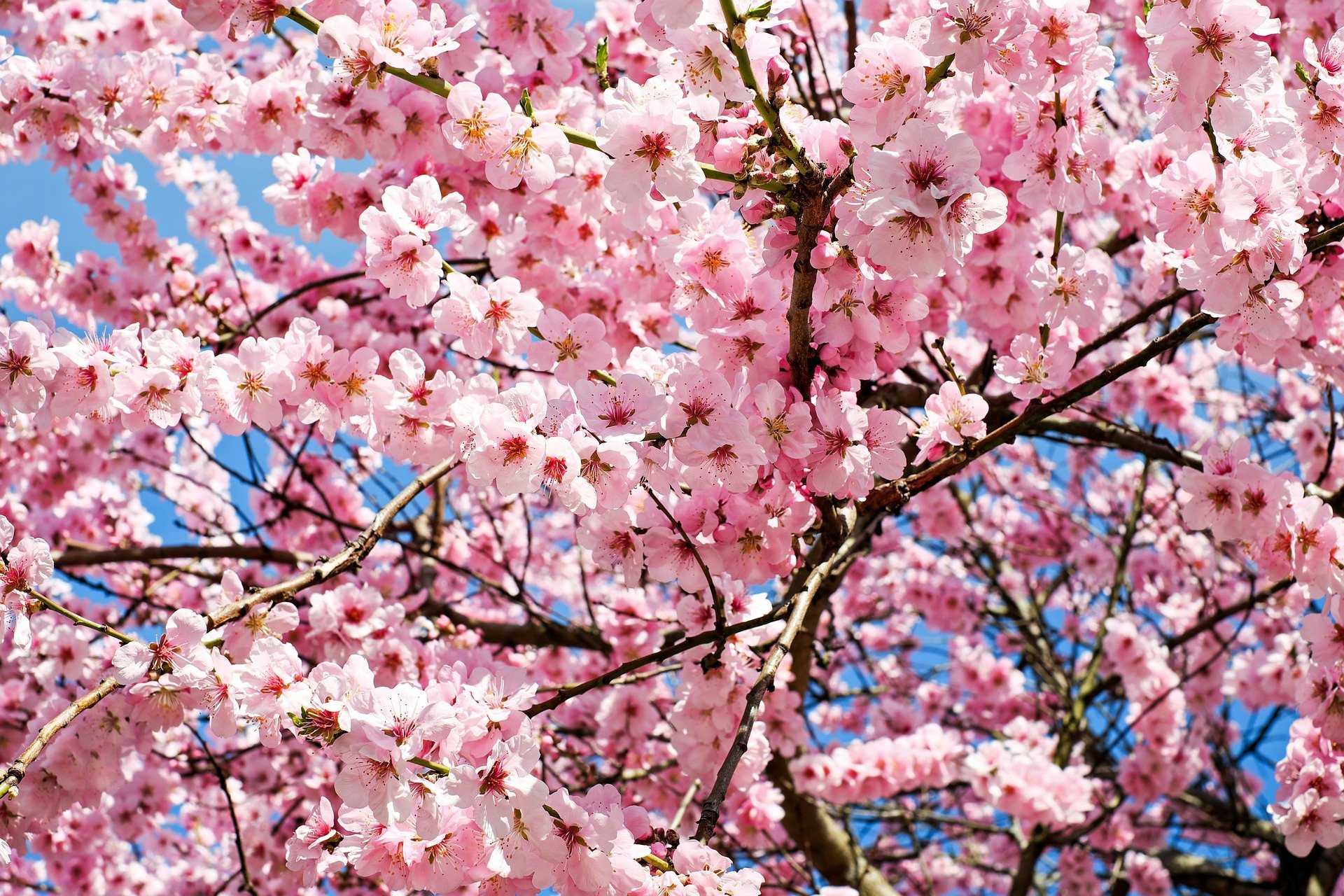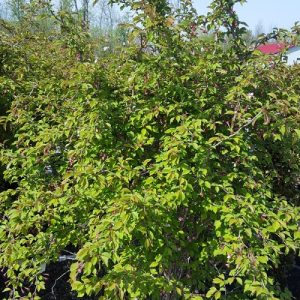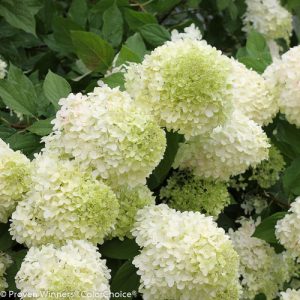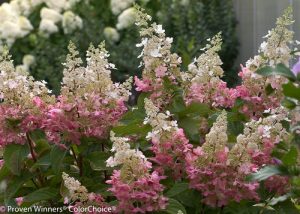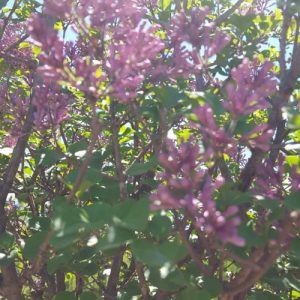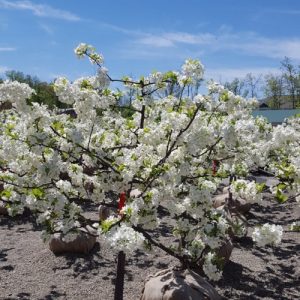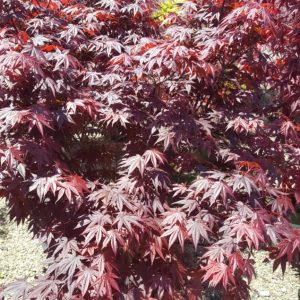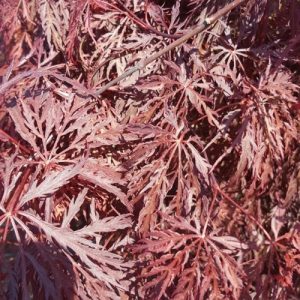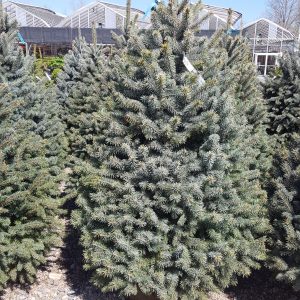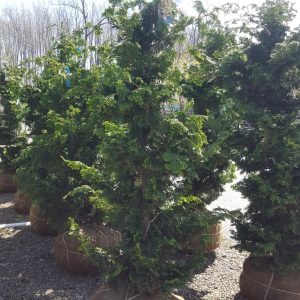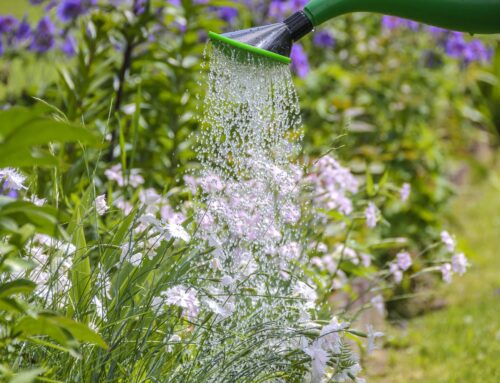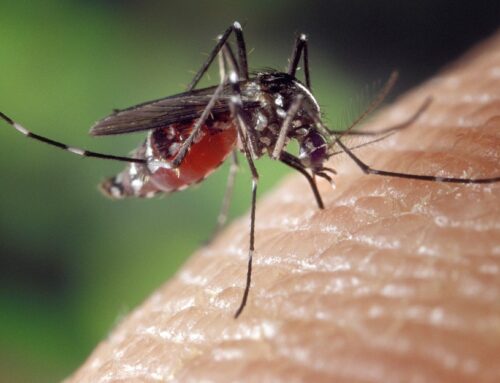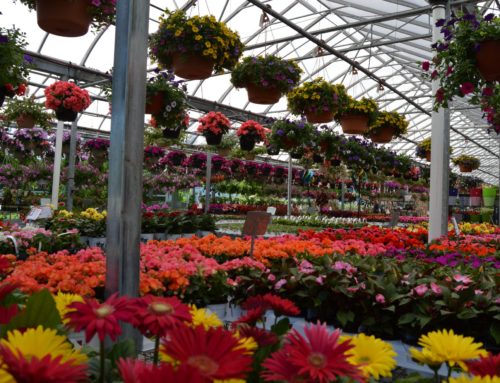By Russell M. Gullo
We’ve all seen it, a tree that has outgrown the space it was planted in. Whether it be a big, old maple tree planted generations ago too close to a house, or an overgrown flowering cherry that is out of scale with its location, removal is often the only solution. This can be prevented, however, by selecting the correct tree, a tree that will maintain a reasonable size and not outgrow its spot. Let’s talk about these 13 excellent options for just that!
Flowering Trees
‘Little Twist’ Cherry
As the name suggests, this is a small tree, reaching only 8’ in height. Don’t let its diminutive size fool you though. ‘Little Twist’ packs a powerful punch of white flowers with pink centers each spring. The perfect ornamental tree for small gardens and tight spaces, it shines year-round. In fall its leaves turn a beautiful burgundy color, and in winter its zig-zag branches provide an interesting sight.
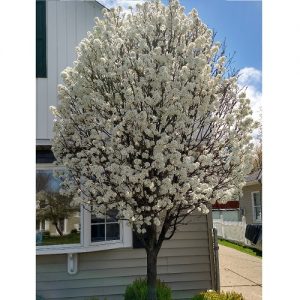
Jack Pear
If you look outside anywhere in Western New York this time of year, you can’t help but notice trees loaded with white blooms dotting the landscape. These are ornamental pear trees and the most common varieties are Cleveland Select Pear and New Bradford Pear. While these two can reach anywhere from 25-40 feet in height, the Jack Pear is a miniature version, growing to only 15 feet. Like its cousins, it is absolutely loaded with white flowers in spring and follows with dark green, glossy leaves. Jack Pear is an ideal tree to plant on the corner of your front landscape.
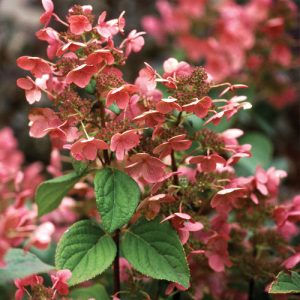
Quick Fire Hydrangea
This tree is “quick to fire” out blooms, about a month earlier than other hydrangeas. The huge blooms cover the entire tree and start out white, before developing a pink hue, and deepening to dark pink later in the season. Reaching only 6 to 8 feet in height, this tree fits almost anywhere! Part of the Proven Winners ColorChoice series, this tree is considered one of the best small flowering trees in the world.
Limelight Hydrangea
Massive creamy white blooms up to 12 inches long appear on this tree in summer and last all the way into fall, creating a dazzling show that is impossible to miss, as the blooms are at eye level. Easy to grow, it can be planted in either sun or shade and grows only 8 feet tall. The blooms make excellent cut flowers as well!
Pinky Winky Hydrangea
What a joy it is to watch this tree transform throughout the year. When its cone-shaped flowers appear in mid to late summer they are white. As the season progresses, the base of the flower, which can reach up to 16 inches in length, turns pink, creating a two-toned effect. It will continue to bloom all the way until frost (usually October). Reaching only 6 to 8 feet in height, Pinky Wink will not outgrow its space.
Korean Lilac
If you love fragrant flowers, this tree is for you. Lilac colored flowers burst forth in late spring, perfuming the yard. Butterflies also love this tree, so expect some friendly visitors if you plant a Korean Lilac. Reaching only 8 feet in height, light trimming can give it a very manicured “lollipop” appearance. Make sure to plant in a sunny spot – these trees love the sun!
Sargent Crabapple
For the environmentally conscious, there are few better trees to plant. In spring reddish-pink buds form, opening into hundreds of white blooms. The pollen from these blooms is excellent food for bees, as they carry it back to their colony to feed larvae. Bright red fruits grow later in the season and persists into the winter, providing valuable food for birds. Reaching only 8-10 feet in height, this tree will fit in almost any landscape.
Japanese Maples
 Bloodgood Japanese Maple
Bloodgood Japanese Maple
The prize piece of many landscapes, this tree remains popular for good reason. Its dramatic, dark crimson leaves appear delicate and wispy, and the tree is often used as a focal point in landscapes. Its appearance belies its hardiness, however. This tree can survive the toughest Buffalo winters and temperatures down to -30°. It grows well in both shade and sun and can be used in both formal and informal gardens (to find out your style read here: https://gullosgc.com/whats-your-landscape-style/). I have a beautiful Bloodgood Japanese Maple in full sun, trimmed very neat and formal, while my next-door neighbor has one in almost fully shade, untrimmed and informal. Both are excellent pieces in their locations.
Laceleaf Japanese Maple
Elegant and genteel come to mind when describing the many varieties of Laceleaf Japanese Maples. Their unique foliage is dissected and appears lacy, hence the name. Very slow-growing and showy, it grows in a pendulous form and is often the centerpiece of a landscape. It requires very little pruning and will grow to only 4 to 8 feet in height depending on its graft.
Evergreens
 Baby Blue Spruce
Baby Blue Spruce
We’ve discussed deciduous trees thus far, but what about evergreens? The Baby Blue Spruce is perfect if you’re looking for a nice, year-round screen. And it doesn’t get 50 plus feet tall like a standard Colorado Blue Spruce. Its silvery blue foliage is striking, and a nice alternative to other evergreen screens such as arborvitae. The deer and rabbits won’t touch these either. Expect this tree to slowly grow 15-20 feet tall and 10-15 feet wide in 10 years.
Dwarf Hinoki Cypress
A true specimen, this exotic-looking small tree provides year-round intrigue to the landscape. It really shines during the 6-7 months of the year when deciduous shrubs have lost their leaves, and this is one of the reasons that any professional landscape plan will feature a mixture of deciduous as well as evergreen plants. It is also virtually maintenance-free and rarely, if ever needs to be trimmed. Growing only 6” or so per year, it will not outgrow the area it is planted in.
Weeping Trees
 Weeping Mulberry
Weeping Mulberry
Vigorous, hardy, and adaptable, the Weeping Mulberry is a great choice for the landscape. Reaching only 6 to 8 feet in height, its dense branches with large leaves will drape all the way to the ground. They can either be left alone to form a natural, informal look, or pruned to an even height for a more formal look.
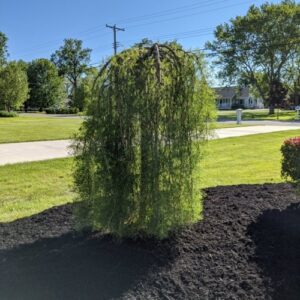
Walker Weeping Peashrub
This extremely tough tree will grow almost anywhere and is hardy to zone 2 (-50° Fahrenheit). Great for a small space in the garden where a vertical element will add more pizzazz than a low-growing shrub, it has foliage similar to a Laceleaf Japanese Maple. When June comes, the tree becomes filled with cascading yellow flowers. Reaching only 6 feet in height and 3 feet in width, it is great for narrow spaces.

